

Rethinking English: Culturally Responsive Classrooms - Indigenous Writes by Chelsea Vowel. On Jun 16, 1944: Fourteen-Year-Old George Stinney Executed in South Carolina. On June 16, 1944, George Stinney Jr., a ninety-pound, black, fourteen-year-old boy, was executed in the electric chair in Columbia, South Carolina.
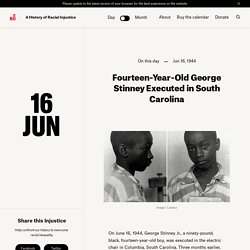
Three months earlier, on March 24, George and his sister were playing in their yard when two young white girls briefly approached and asked where they could find flowers. Hours later, the girls failed to return home and a search party was organized to find them. George joined the search party and casually mentioned to a bystander that he had seen the girls earlier. The following morning, their dead bodies were found in a shallow ditch. George was immediately arrested for the murders and subjected to hours of interrogation without his parents or an attorney. On April 24, George Stinney faced a sham trial virtually alone. Get Started. Nurturing Community and Connection During this period of physical distancing and remote learning, it is both more challenging and more important than ever to nurture a sense of community and connection with our students.

Grounded in student autonomy and choice, a remote book club can help students feel a sense of control during this time of uncertainty, build reading into their daily routines, and make meaningful connections with each other through an exploration of literature. Use this guide thoughtfully and creatively and adapt the suggestions as circumstances require. Goals of Facing History Book Clubs.
National Emergency Library : Free Texts : Free Download, Borrow and Streaming. 1925 by Cherrington, Ernest Hurst, 1877-1950, editor texts eye favorite 0 comment 0 Includes bibliographical references Topic: Temperance favorite 1 1925 by Burgess, Thornton W.
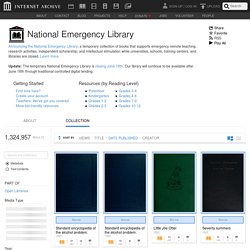
Favorite 4 Cover title: The adventures of Little Joe Otter Topic: Otters. Microaggressions in the Classroom. Shop – The Multicultural Classroom. Showing all 2 results The Blog: Catch Up We respect your email privacy Powered by AWeber Email Marketing.

The Anti Racist Teacher – The Multicultural Classroom. Anti-racism resources for white people. How to Develop Culturally Responsive Teaching for Distance Learning. Hammond distinguishes the differences between culturally responsive education, multicultural education and social justice education.
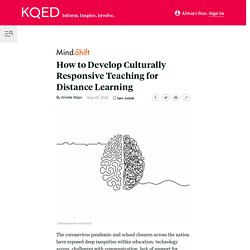
Each is important, but without a focus on building students’ brain power, they will experience learning loss. When it comes to distance learning, applying culturally responsive teaching requires “remixing” education by borrowing from the best practices in how kids learn (Montessori, project-based learning, etc.) in a way that repositions the student as the leader of his own learning. By giving students more agency, the idea is to disrupt old routines around teaching and learning that make the student dependent on the teacher for receiving knowledge. “It’s going to stretch us a little out of our own comfort zones, but it’s worth it in the long run if we can get students to continue to do that thinking,” said Hammond.
She advises three strategies to help students gain that independence: 1. “Survey your students if you don’t know what they like,” said Hammond. Episode 27: What Happens to Culturally Responsive Teaching When It’s All Online? by Extra Help with InsideSchools. Zoom is a video conferencing product that has seen exponential adoption as schools have switched to online learning during Covid-19.
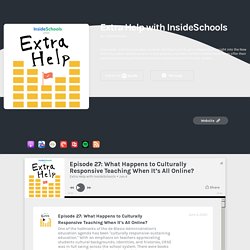
Students across NYC are using it with their teachers every day. But recent reports have raised alarm, saying Zoom disregards privacy and security protocols. In this episode, host and public school parent Tom Liam Lynch investigates further to see what all the fuss is about. Equity Learning Center. Equity Learning Center. Equity Learning Center. Equity Learning Center. Baroness von Sketch Show. Ready for Rigor Framework: Sandbox hguo. How ‘Reading Instruction’ Oppresses Black And Brown Children. The murder of George Floyd has shined a spotlight on police brutality and racial injustice.
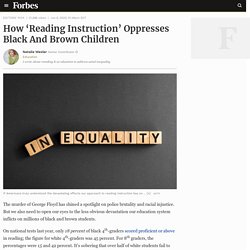
But we also need to open our eyes to the less obvious devastation our education system inflicts on millions of black and brown students. On national tests last year, only 18 percent of black 4th-graders scored proficient or above in reading; the figure for white 4th-graders was 45 percent. For 8th graders, the percentages were 15 and 42 percent. It’s sobering that over half of white students fail to meet the proficiency bar. But the figures for black students should outrage anyone who cares about social justice. Want to know something even more outrageous? Reading scores for black, Hispanic, and low-income students have been so low for so long, and efforts to raise them have been so fruitless, that many have come to simply accept them.
They are powerful. About Us - Action Dignity. Why We Exist We exist because we all need each other.

We all depend on each other and we are all valuable, important and worthy of the same treatment and the same opportunities. We can only build the future, a future worthy of our children, by standing together and fostering a community of equality and dignity for all. We are a country steeped in indigenous histories and fused together in a mosaic of cultures. We pride ourselves of living in a community who respects and values differences. We exist to ensure all of us experience this right.
A Conversation About Instructional Equity with Zaretta Hammond, Part 1. At Collaborative Classroom, we’re dedicated to transforming the school experience, developing students, and empowering educators by deepening their teaching practices.

Zaretta Hammond is one of our best thought partners in this work, consistently pushing our thinking and challenging us to do better. A national education consultant for the past 25 years and the author of the best-selling book, Culturally Responsive Teaching and the Brain: Promoting Authentic Engagement and Rigor Among Culturally and Linguistically Diverse Students, Ms. Hammond joined the Collaborative Classroom Board of Trustees in November 2018. We recently had the privilege of discussing instructional equity—both the big picture and classroom practice—with Ms.
Hammond. Collaborative Classroom: Equity has become a prominent topic in conversations about education reform. Zaretta Hammond: There are a couple of important but separate things in this question. Then there is the “equity question” related to instruction. A Conversation About Instructional Equity with Zaretta Hammond, Part 1.